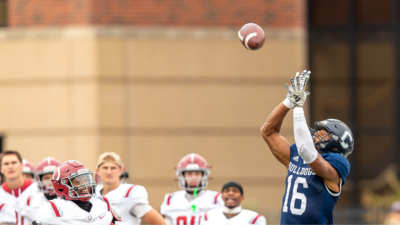Navigating the Challenges and Opportunities of Name, Image and Likeness (NIL)

The era of Name, Image and Likeness (NIL) rights has revolutionized collegiate athletics, providing student athletes with unprecedented opportunities to monetize their personal brands. However, with these opportunities come significant challenges, not only for athletes but also for athletic administrators tasked with navigating this evolving landscape.
Opportunities of NIL
Empowering Student Athletes
NIL allows student athletes to capitalize on their talents and public recognition. From local endorsement deals and social media partnerships to autograph signings and personal training services, athletes now have the freedom to earn money while maintaining their amateur status. This shift empowers athletes, particularly those in smaller markets or less-publicized sports, to create financial opportunities based on their unique skills and platforms.
For example, a Division II basketball player with a strong local following or a track athlete with an engaging social media presence can now monetize their influence. This democratization of earning potential opens doors for athletes beyond high-profile football or basketball programs, ensuring that talent and effort are rewarded across all levels and sports.
Building Life Skills
Managing NIL deals requires athletes to develop critical skills in personal branding, contract negotiation, time management and financial literacy. These skills not only enhance their current opportunities but also prepare them for life after athletics. Athletes learn how to navigate partnerships, balance their commitments and make informed decisions about their personal and professional futures.
Increased Visibility for Athletic Programs
Athletic programs can benefit indirectly from the NIL era. When student athletes excel at leveraging their NIL opportunities, it reflects positively on their programs and institutions, attracting prospective athletes and enhancing recruiting efforts. This visibility can foster stronger community ties and generate interest from sponsors and donors.
Challenges of NIL
Compliance and Regulation
One of the most significant challenges of NIL is ensuring compliance with an array of state laws, athletic organization policies and institutional guidelines. The patchwork of regulations creates confusion for athletes and administrators alike. Without a standardized framework, schools must navigate varying requirements, often without adequate resources or expertise.
For athletic administrators, maintaining compliance requires staying current on ever-changing policies and educating athletes to ensure they avoid violations. Missteps can lead to penalties for athletes and reputational damage for institutions.
Equity Concerns
NIL opportunities are not distributed equally. High-profile athletes in major sports often attract lucrative deals, while those in smaller sports or lesser-known programs may struggle to gain similar attention. This disparity can create tensions within teams, as some athletes benefit significantly while others see minimal gains.
Athletic administrators and coaches must work to foster an environment that prioritizes team cohesion and addresses equity concerns. This includes providing resources to help all athletes identify and pursue NIL opportunities.
Time Management and Prioritization
Balancing academics, athletics and NIL responsibilities can be overwhelming for student athletes. The demands of securing and managing endorsements can detract from their primary commitments, potentially affecting their performance on the field and in the classroom.
Athletic administrators play a crucial role in guiding athletes to prioritize their responsibilities effectively. Establishing support systems, such as financial advisors and NIL-specific educational resources, can help athletes manage these demands.
The Role of Athletic Administrators and Coaches
In the NIL era, athletic administrators and coaches are at the forefront of this transformation, tasked with ensuring compliance, supporting athletes and maximizing opportunities for their programs. Beyond individual athletes, administrators must develop strategies to integrate NIL opportunities into their programs’ broader goals. This includes creating partnerships with local businesses, fostering alumni engagement and enhancing the visibility of lesser-known sports.
The Path Forward
Name, Image and Likeness represents a transformative moment in collegiate athletics, offering opportunities for athletes and programs while posing new challenges for coaches, athletic directors and other administrators. Navigating this landscape requires a blend of knowledge, adaptability and values-driven leadership—qualities cultivated in Concordia University, Nebraska’s Master of Science in Athletic Administration program.
As a Lutheran institution, Concordia emphasizes ethical decision-making and servant leadership. In the context of NIL, this means guiding athletes to pursue opportunities that align with their values and reflect positively on themselves and their programs. Concordia’s MSAA program prepares administrators to foster a culture of integrity and purpose within their athletic departments.
By equipping future athletic leaders with the tools to manage compliance, support athletes and leverage NIL opportunities strategically, Concordia ensures its graduates are prepared to thrive in this dynamic environment. Whether addressing equity concerns, fostering personal growth or enhancing institutional visibility, Concordia’s MSAA graduates are uniquely positioned to lead with integrity and purpose.
As collegiate athletics continues to evolve, the need for skilled, ethical and visionary leaders has never been greater. Concordia’s MSAA program stands as a beacon for those ready to embrace the challenges and opportunities of the NIL era, transforming the landscape of sports and the lives of the athletes they serve.
Interested in Concordia's Master of Science in Athletic Administration?


